Tips for Choosing the Best Fabric for Sportswear
Modern sportswear has spread throughout our society beyond its traditional use in fitness facilities. It has become a common sight when people visit coffee shops and run daily activities as well as when they remain indoors. This integration of all sportswear types with everyday wear has changed how we dress.
But when we actually do work out, the fabric of our clothes really matters. According to material selection, wrong choices will lead to uncomfortable heat sensation combined with skin itching and general unpleasantness. Long runs can produce raw skin on your body while yoga session temperatures simulate the environment of a steam room.
Did you ever wear a cotton t-shirt while working out – no, right? It gets heavy with sweat, sticks to your skin, and takes forever to dry. Or maybe you’ve worn something too tight that limited how you could move.
The best fabric for sportswear can make working out much better. It allows your body to stay cool while providing ventilation for your skin and flexibility to match your movements and improvement of your athletic performance. It becomes essential for buyers to understand the best fabric for sportswear before making purchase decisions.
Innovate Apparel stands among the leading fitness clothing manufacturers dedicated to delivering superior merchandise for their customers. They prepared this blog to help everyone get a know-how of the best fabric for sportswear, and what factors to consider.
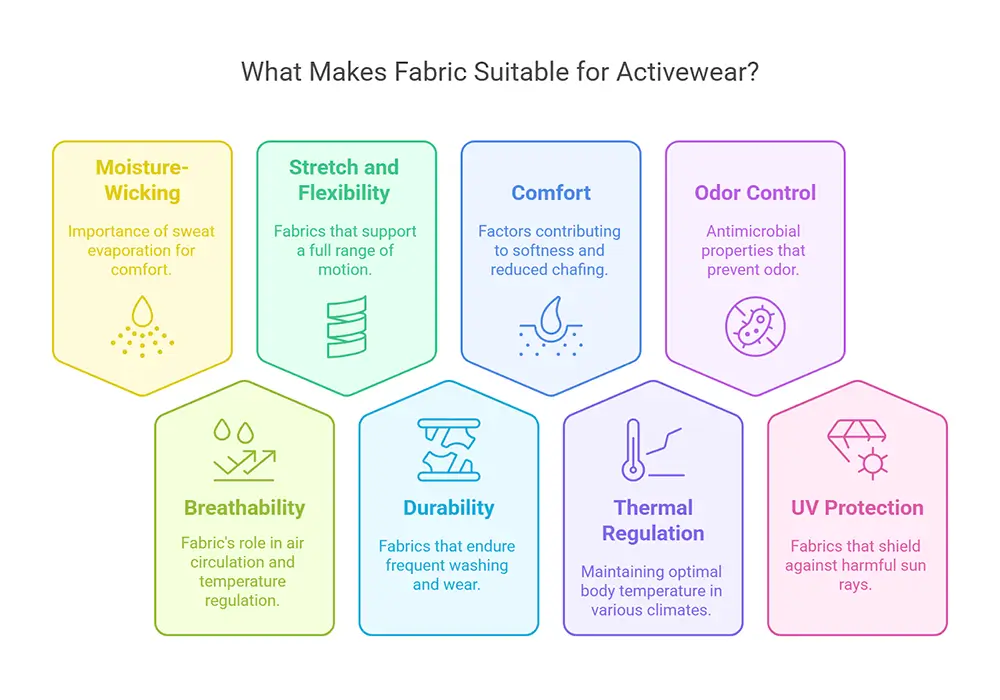
What Makes Fabric Suitable for Activewear?
- When you sweat during a workout, your clothes should pull that moisture away from your skin. This is called “wicking.” If your outfit is made with the best fabric for sportswear, it won’t stay wet and heavy. Instead, they help sweat move to the outside of the fabric where it can dry quickly. This keeps you feeling dry and light.
- Your skin needs to breathe when you exercise. The best fabric for sportswear lets air flow through them. This helps cool you down when you’re working hard and getting hot.
- Movement matters too. Your clothes shouldn’t hold you back. The best sportswear material will stretch when you do. They let you bend, reach, and move freely without pulling or getting tight in the wrong places.
- Sportswear goes through a lot – stretching, sweating, and many washes. They need to be tough enough to handle all this without wearing out too fast.
- Comfort is key. Nobody wants itchy, rough, or scratchy clothes while exercising. The best fabric for sportswear feels soft against your skin and doesn’t rub or cause red marks.
- Some fabrics help keep your body at the right temperature. They warm you when it’s cold outside and cool you when it’s hot.
- Nobody wants smelly workout clothes. Special fabrics kill bacteria responsible for unpleasant odors which extend the freshness time of workout apparel.
- People who work out in the open need clothes which will shield their skin from the sun’s rays. The best fabric for sportswear offers maximum UV protection to protect against dangerous sun rays.
Breakdown of the Best Fabric for Sportswear: Pros and Cons
Polyester
Pros:
- Highly durable and maintains shape even after many washes
- Excellent at wicking moisture away from skin
- Dries very quickly after getting wet
- Resistant to wrinkles, making it look fresh longer
- Generally more affordable than specialized natural fibers
- Accepts dyes well, allowing for vibrant colors and patterns
Cons:
- Can trap odors from bacteria growth if not specially treated
- Less breathable than some natural alternatives
- Not biodegradable and contributes to microplastic pollution
- Can feel hot in extreme temperatures without special construction
- Sometimes creates static electricity in dry conditions
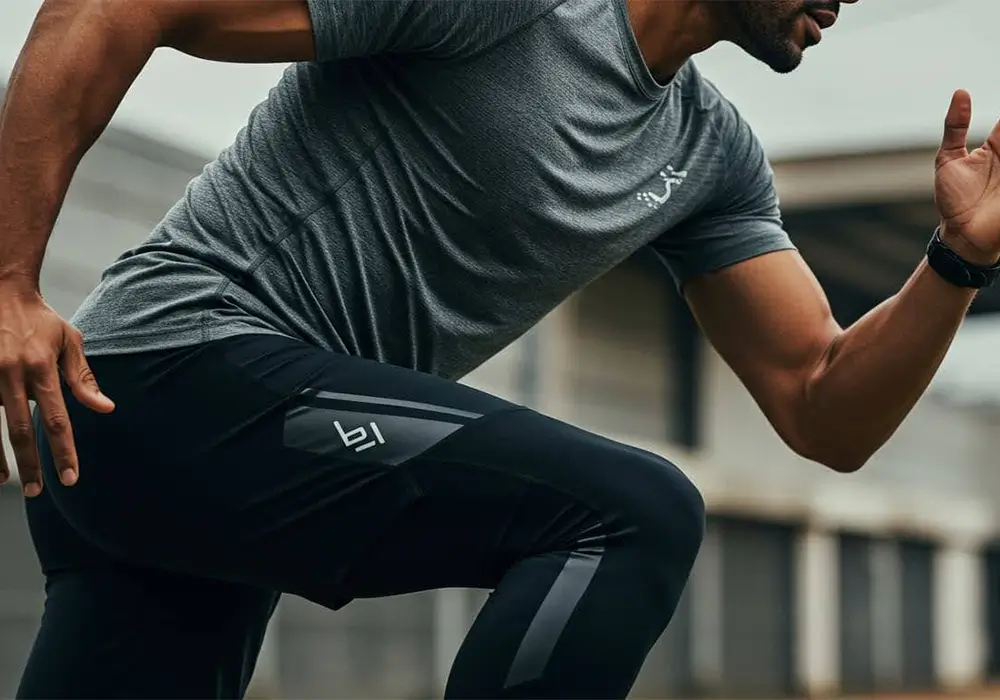
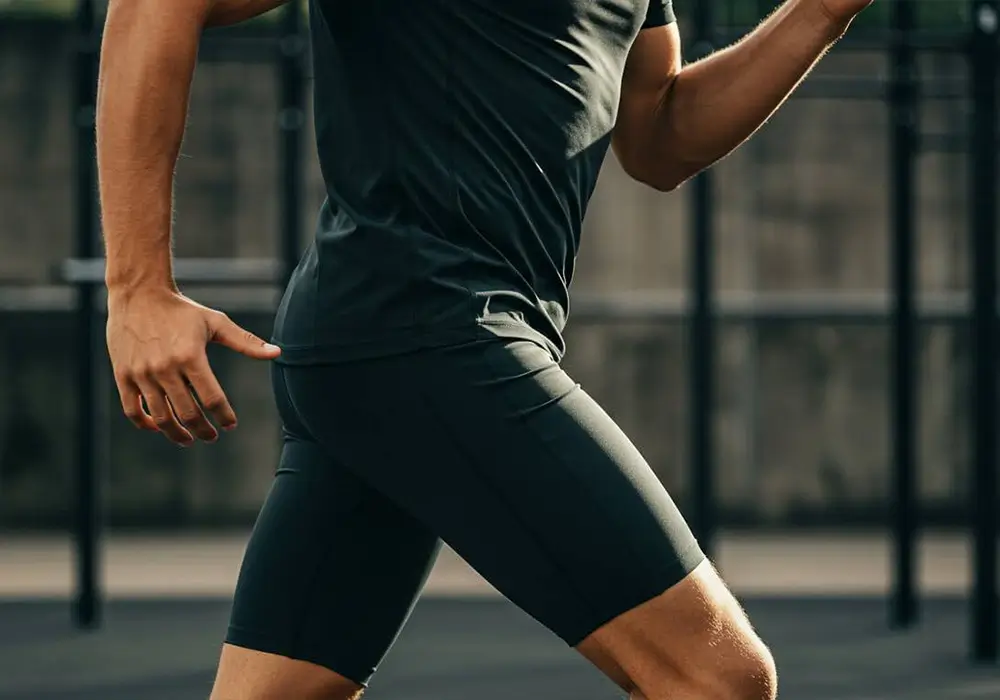
Nylon
Pros:
- Remarkably strong and resistant to tears
- Excellent elasticity and shape retention
- Highly resistant to abrasion and friction
- Dries quickly when wet
- Lightweight with good drape
- Very durable, lasting through many washing cycles
Cons:
- Can feel uncomfortably cool and clammy when saturated with sweat
- Less breathable than many alternatives
- Often creates a distinct swooshing sound when fabrics rub together
- Prone to static build-up in dry conditions
- Absorbs odors over time if not treated
- Can be damaged by excessive heat
Spandex (Elastane)
Pros:
- Exceptional stretch and recovery properties
- Provides compression that can support muscles during activity
- Allows for unrestricted movement in snug-fitting garments
- Helps clothing maintain shape over time
- Creates body-hugging fits that stay in place during movement
- Adds comfort to waistbands and other areas needing flexibility
Cons:
- Almost always needs to be blended with other fibers
- Not breathable when used in higher percentages
- Can break down from exposure to body oils, sunscreen, and chlorine
- Loses elasticity over time with washing and wear
- More expensive than many basic fibers
- Can feel too constrictive for some people
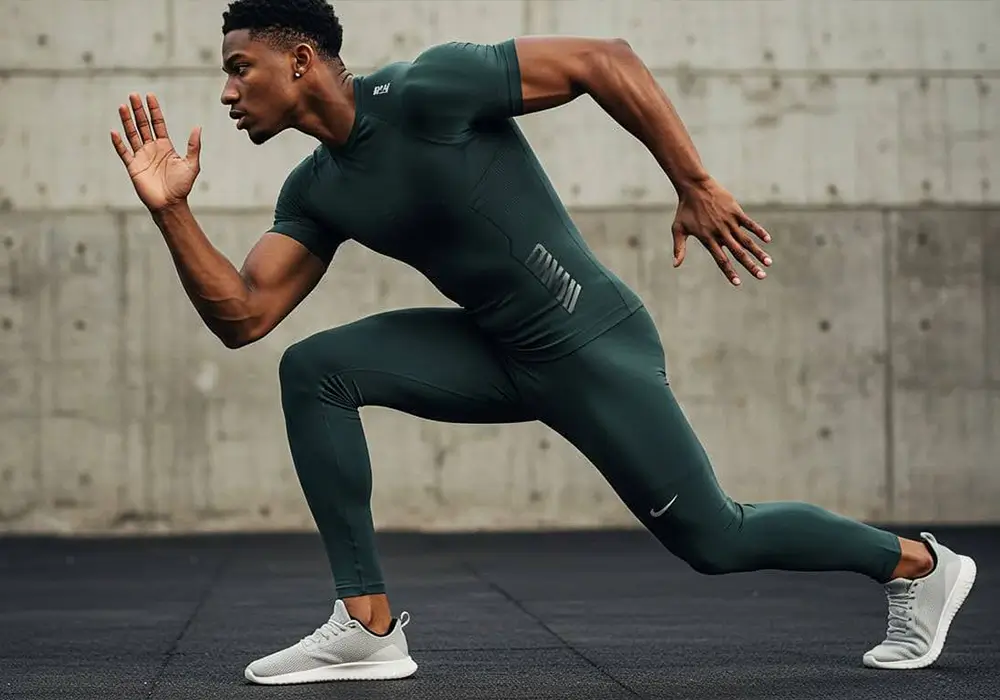
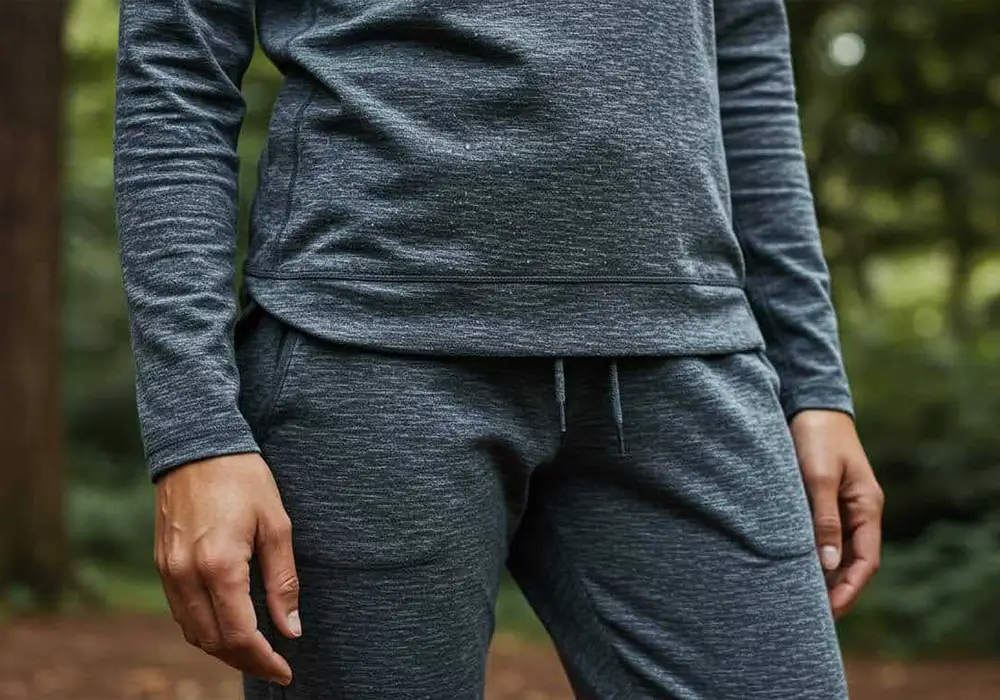
Cotton
Pros:
- Exceptionally soft and comfortable against skin
- Highly breathable, allowing air to flow through
- Natural fiber that’s biodegradable
- Hypoallergenic and suitable for sensitive skin
- Absorbs dyes well for rich, lasting colors
- Improved versions (like pre-shrunk or treated cotton) address some limitations
Cons:
- Absorbs and holds moisture rather than wicking it away
- Becomes heavy when saturated with sweat
- Dries very slowly once wet
- Can cause chafing when wet during prolonged activity
- May shrink after washing unless pre-treated
- Loses shape and stretches out with wear
Bamboo Fiber
Pros:
- Extraordinarily soft and gentle on skin
- Natural antimicrobial properties help reduce odors
- Excellent moisture management for a natural fiber
- Highly breathable with good temperature regulation
- More sustainable growing practices than cotton
- Biodegradable at end of life
Cons:
- Generally more expensive than synthetic alternatives
- Often less durable than polyester or nylon
- May pill more easily with repeated wear
- Sometimes requires more delicate washing
- Manufacturing process can involve harsh chemicals despite natural source
- Can shrink if not properly pre-treated
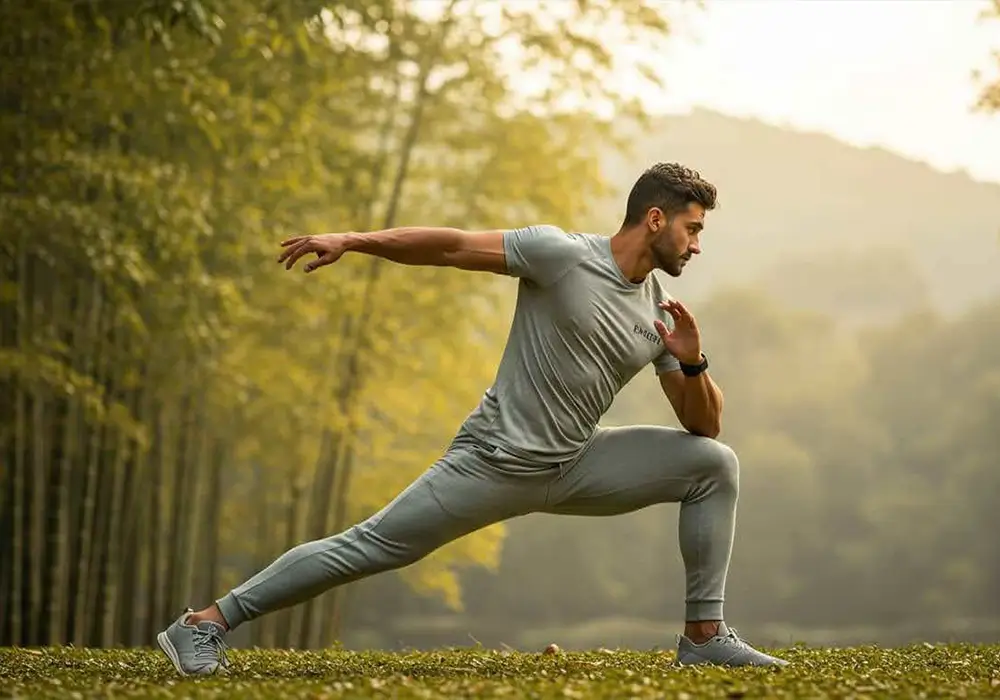
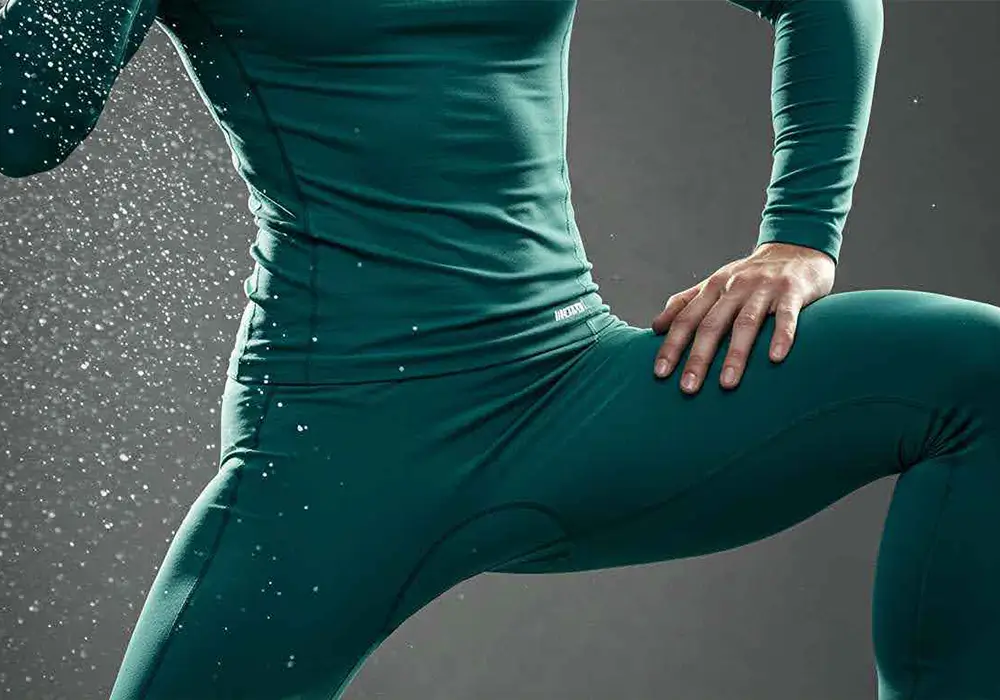
Microfiber
Pros:
- Superior moisture-wicking abilities due to increased surface area
- Exceptionally soft and smooth texture
- Lightweight yet provides good warmth when needed
- Dries extremely quickly due to fine fiber structure
- Highly durable despite lightweight feel
- Creates fabrics that drape well on the body
Cons:
- Can be more expensive than standard synthetic fabrics
- Often releases more microplastics during washing
- Can develop static electricity issues
- May trap body oils and develop odors over time
- Sometimes feels too warm in hot conditions
- Can snag more easily than standard weaves
Blends
Pros:
- Customized performance characteristics for specific activities
- Better overall performance than single-fiber fabrics
- Can balance comfort, performance, and durability
- Often more affordable than premium single-fiber options
- Combines natural feel with technical performance
- Can address multiple needs simultaneously (stretch, wicking, comfort)
Cons:
- Quality varies widely between manufacturers
- Can be difficult to recycle due to mixed materials
- Performance depends on specific blend ratios
- May compromise slightly on the primary strength of each component
- Sometimes created to cut costs rather than improve performance
- Can be marketed misleadingly (like “cotton blend” with minimal cotton)
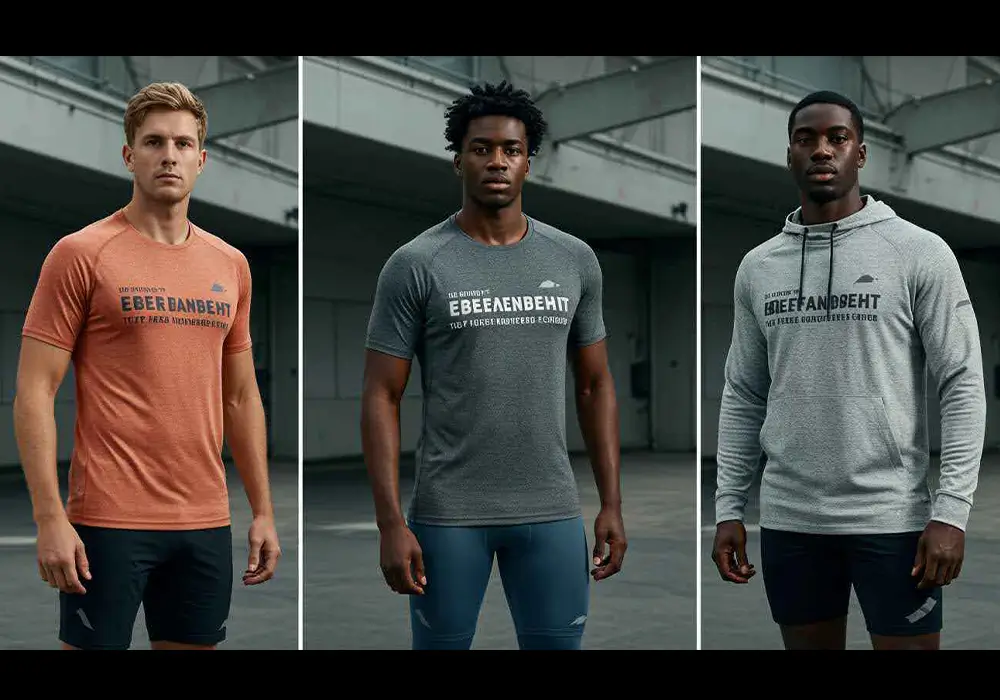
Choosing the Best Fabric for Sportswear (Based on Sports)
High-Intensity Workouts:
Yoga/Pilates:
Outdoor Activities:
Cold Weather Workouts:
Casual/Athleisure Wear:
Factors to Consider When Choosing The Best Fabric for Sportswear
1. Type of Activity:
Workouts require unique clothing types that differ according to specific activities. Running demands both freedom of motion and sweat control which requires fabrics that drain water quickly. Customers need stretchy materials when practicing yoga because they need fabric that adjusts to their movements. Weight lifting? Strong fabrics must be chosen since they resist deterioration from rubbing against exercise equipment.
1. Type of Activity:
2. Climate:
3. Personal Preference:
4. Budget:
5. Care Instructions:
6. Sustainability and Ethical Considerations
Closure: Informed Choices for the Best Fabric for Sportswear
There’s no “single” best fabric for sportswear, just as everyone has a unique body, specific fabrics are suitable for them. What works perfectly for your friend might not be right for you. When picking workout clothes, think about what matters most in your situation.
Ask yourself: What kind of exercise do I do most? Where do I usually work out – indoors, outdoors, hot places, cold places? Which fabrics feel good against my skin? How much am I willing to spend? Do I care about environmental impact?
Your running shorts might need different features than your yoga pants. Your summer workout tops will be different from what you wear in winter. The fabric that feels great during a gentle walk might not work for an intense training session.
Take some time to try different options until you find the best fabric for sportswear that suits you well. Pay attention to how fabrics perform during your workouts. Do they stay comfortable? Do they last through many washes? Do they help or hinder your performance?
The perfect workout clothes support your exercise goals without causing distractions or discomfort.Share your answers with Innovate Apparel’s team and we will produce fitness clothing that uses the best fabric for sportswear.
